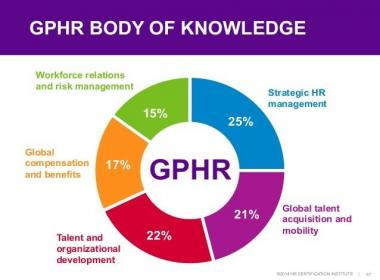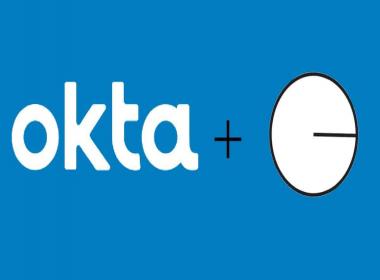
Vestibular physiotherapy, a specialized branch of physical therapy, has been increasingly recognized for the crucial role it plays in managing balance and dizziness disorders. In Grande Prairie, vestibular physiotherapy at GP Pain Physiotherapy offers a beacon of hope for those struggling with these often debilitating conditions.
What is Vestibular Physiotherapy
At its core, vestibular physiotherapy focuses on treating conditions related to the vestibular system, a key component of the inner ear that helps regulate balance and spatial orientation. Disorders of this system can lead to symptoms like vertigo, dizziness, balance issues, and nausea, significantly impacting one’s quality of life. Vestibular physiotherapy Grande Prairie offers targeted treatments to alleviate these symptoms and improve overall functionality.
What Are The Conditions Addressed by Vestibular Physiotherapy
- Benign Paroxysmal Positional Vertigo (BPPV): This is a frequent cause of vertigo, characterized by brief episodes of dizziness related to changes in head position. Vestibular physiotherapy employs specific maneuvers to reposition the dislodged crystals in the inner ear, providing immediate relief in many cases.
- Vestibular Neuritis and Labyrinthitis: These conditions, often following viral infections, lead to inflammation in the inner ear, causing vertigo and imbalance. Physiotherapy helps in retraining the brain to adapt to the changes in the vestibular system.
- Meniere’s Disease: A chronic condition characterized by episodes of vertigo, hearing loss, and tinnitus. Vestibular therapy includes exercises to manage balance issues and strategies to cope with the episodic nature of the disease.
- Age-Related Dizziness and Imbalance: As people age, they may experience a decline in vestibular function, leading to an increased risk of falls. Vestibular physiotherapy includes balance training and fall prevention strategies.
How Does Vestibular Physiotherapy Help
Individualized Assessment
The assessment process involves detailed questioning about the patient's medical history, symptoms, and any triggering factors for their condition. The therapist evaluates your balance, gait, and eye movements. Using specialized tests, they pinpoint the specific vestibular issue affecting your balance. This step is crucial because the type of vestibular disorder (like BPPV, Meniere's disease, or vestibular neuritis) dictates the treatment approach.
Cutting-edge diagnostic techniques like videonystagmography (VNG) may be used to assess the inner ear and central motor functions. The physiotherapist also evaluates the patient's baseline balance and coordination capabilities. It's like solving a puzzle – each piece of information helps in crafting a personalized treatment plan.
Canalith Repositioning Maneuvers for BPPV
These maneuvers are a cornerstone in treating BPPV, often providing immediate relief from vertigo symptoms. Maneuvers, like the Epley or Semont, are designed to move the dislodged crystals in your inner ear back to their correct position. It's quite fascinating – a few simple movements can often provide instant relief from vertigo and improve your balance dramatically.
The procedure is non-invasive and can be repeated if symptoms reoccur. Patients are also educated on how to perform certain maneuvers at home as a part of ongoing self-care. Follow-up appointments are important to ensure that the crystals remain in their proper place. Success rates for these maneuvers are high, making them a preferred first line of treatment for BPPV.
Balance and Gait Training Exercises
These exercises are designed to challenge and improve the body’s ability to maintain stability in various positions and during different activities. The physiotherapist gradually increases the difficulty level of exercises to match the patient's progress. Techniques such as tandem walking, balance board exercises, and using a BOSU ball are common. This training not only improves balance but also boosts confidence in performing daily activities. The goal is to reduce the risk of falls and improve overall mobility.
Habituation Exercises
Habituation exercises involve controlled exposure to movements that provoke dizziness, gradually desensitizing the patient's response. These exercises are customized based on the movements that specifically trigger the patient's symptoms. The progression of these exercises is closely monitored to ensure they are challenging yet not overwhelming. Over time, these exercises help patients perform daily tasks without provoking dizziness. Consistency and patience are key, as habituation is a gradual process.
Gaze Stabilization Exercises
Gaze stabilization exercises focus on improving the control of eye movements, which is often disrupted in vestibular disorders. These exercises are particularly important for tasks that involve changing the focus quickly, such as driving or reading. Patients practice focusing on a stationary object while moving their heads to different positions. These exercises also help in improving coordination between the vestibular and visual systems. Regular practice leads to a significant reduction in symptoms related to head movements.
Education and Self-Management Techniques
Patients are educated about the anatomy and function of the vestibular system to understand their condition better. They learn about factors that can exacerbate their symptoms, including stress, diet, and certain activities. The therapist provides tips on how to manage symptoms during an episode of dizziness or vertigo. Self-management techniques also include relaxation and breathing exercises to help control anxiety related to dizziness. Empowering patients with this knowledge is crucial for them to take an active role in their recovery.
Regaining Balance With Vestibular Physiotherapy
Vestibular physiotherapy offers a specialized approach to tackling the challenges posed by balance and dizziness disorders. At GP Pain Physiotherapy in Grande Prairie, patients can access expert care and personalized treatment plans designed to restore their equilibrium and enhance their overall well-being. This form of therapy is a cornerstone in managing vestibular conditions, helping patients regain balance in both the physical and metaphorical sense.
Also read about:
What distinguishes effective Motor Vehicle Accident Physiotherapy
How to choose the best furniture shop in uae
Best Business Contract Lawyer in US








